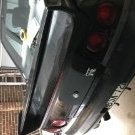Water/meth Injection Kit.
Announcements
-
Similar Content
-
Latest Posts
-
Still got it- First time checking sau in a while ahhaha
-
I don't know about that. I can hoon my R32 around - hard launches, high lateral Gs - with <<1/4 tank without any such shenanigans. This with the previous 040 and the current GSS342. I would suspect a fuel line problem. One of the hoses associated with the top of the tank perhaps.
-
By funkymonkey · Posted
This is amazing. Love that you’re giving the boys an intro to cars and off the screens. They probably have an insta for the car and build posts on TikTok for their mates. -
By Murray_Calavera · Posted
It is. Your car works fine with the tank full. If you drive like a Nana it works fine. You give it a boot full with half a fuel tank, you get surge. It 100% is a fuel surge issue. Maybe have a look at installing a Hydramat if you don't want to install a surge tank. https://www.holley.com/products/fuel_systems/hydramat/ -
By funkymonkey · Posted
Hanging out in Perth for a conference. Asked for a room with a view… got a view of Bustdown Festival might stroll down and go say hi to Spotto and some of the hoonfluencers
-





Recommended Posts
Create an account or sign in to comment
You need to be a member in order to leave a comment
Create an account
Sign up for a new account in our community. It's easy!
Register a new accountSign in
Already have an account? Sign in here.
Sign In Now